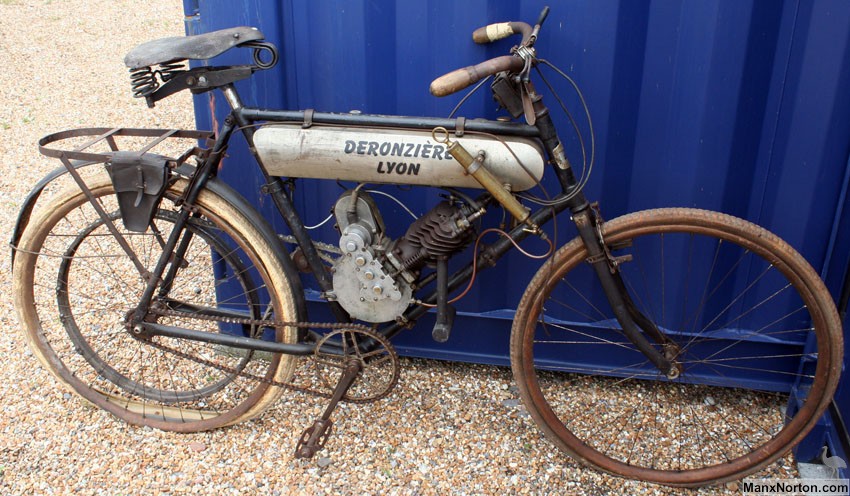1906 Deronziere Autocyclette 282cc
In the 21st century, there’s clear line drawn between cycling and motorcycling. But, at the dawn of the twentieth century, such divisions did not exist. Bicycles were still a novel form of transportation, with cyclists fighting daily battles with horse-drawn vehicles, policemen, pedestrians, local authorities that tried to restrict their use, and the conservative society of the day with its various codes of conduct constantly challenged by ‘bicyclists.’ When manufacturers started attaching engines to bicycles, there was not a single cyclist who was not excited by the prospect.
Cycle manufacturers were overjoyed to be able to diversify into making motorised bicycles and components to keep their businesses afloat, and the annual bicycle show became a motor cycle and bicycle show. As the Victorian Age gave way to the Edwardian, the Boer War ended, and a fabulous optimism swept over the public, much of it funded by the potential offered by these novel forms of independent transportation.
Bicycle prices had been forced down by over-production and intense competition so, as motorcycles and automobiles became the new fashionable dalliances of the upper classes, the working classes were able to afford secondhand bicycles. Increased mobility of the working population in turn helped industry. WW1 was a further turning point for invention and innovation in transportation; motorcycles not only now had clutches and gears, but soon they had chains to drive their wheels.
All along, chaps continued to tinker in their garages and sheds. Every male rider was equipped for at least basic maintenance, and female riders enjoyed the challenge of repairing their bicycles too. New models and innovations announced in the magazines of the day were eagerly scrutinised. Owning even a basic, cheap, secondhand bicycle entitled the rider to lucid dreams of the latest ridiculously overpriced top-of-the-range motor bicycle, exotic powered machines from France...
Deronziere Motorcycles


